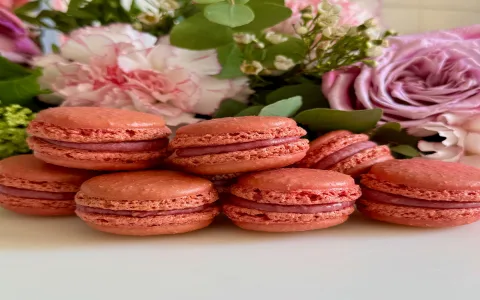Man, I gotta tell you, this whole thing started because of a nightmare I had last spring. Not a scary nightmare, but one that just felt… aggressively vibrant. Usually, my dreams are kind of muted, you know? Like old film. But this one was just explosions of color, and the one that wouldn’t leave me alone was orange. Not a soft, sunset orange. This was the blinding, traffic-cone orange. I woke up with my heart pounding, not from fear, but from sheer visual overload.
I immediately hit the internet, like we all do, and started typing in searches: “What does orange mean in dreams?” What a mess. One site told me it meant great creativity and joy. The next site told me it meant danger, caution, and impending arguments. I was getting whiplash. My gut told me both were wrong, or maybe both were right depending on the context. I decided right then I wasn’t going to trust some random dude’s interpretation. I was going to build my own data set.
The Three-Month Data Dive: Committing to the Log
My practice started right there. I went out and bought three new notebooks. One was for my standard daily log, the second was strictly for dreams, and the third was just for tracking the colors that showed up. I designated three months for this experiment. I figured 90 days of dedicated tracking should give me enough juice to squeeze out some real insight.

The logging process was grueling. Every morning, the second my feet hit the floor—before coffee, before checking my phone—I had to write down the dream details. Specifically, I zeroed in on the colors. If orange was present, I documented four specific things:
- The exact shade of orange (Was it neon? Burnt? Pastel?).
- The object the orange was attached to (A car, a fruit, a swirling cloud, etc.).
- The emotional feeling associated with that color in the dream (Anxiety, excitement, warmth, pressure).
- The most significant emotional event that happened in my waking life that day.
I started noticing patterns almost immediately, but they were confusing as hell. On one Tuesday, I dreamt of a huge, bright orange banner floating over a crowd. I wrote down “Excitement/Anticipation.” That day, my boss called me and offered me a massive new project that was creatively thrilling but terrifyingly high-pressure. Total positive, right?
But then, two weeks later, I dreamt of a dull, rusty, burnt orange stain on a white carpet. I wrote down “Guilt/Stagnation.” That day, I had to have a tough conversation with a friend about how I felt stuck in our business partnership. That felt overwhelmingly negative. So the simple binary approach—good or bad—was clearly garbage.
Dissecting the Shades and the Feeling
After about 60 days of charting, I had a decent pile of entries. I literally taped all the pages up on my office wall, like some kind of detective movie, and started drawing lines between the dream events and the waking events. I was trying to find the connection that wasn’t just “good thing happened” or “bad thing happened.” I needed the underlying energy.
Here’s what I nailed down after reviewing those logs:
1. Neon, Bright, or Fluorescent Orange (The Traffic Cone):
This shade was never about simple happiness. It always correlated to a sudden, high-energy activation, often involving a shift in status or direction. It meant transition. It was the feeling right before you jump off the high diving board—pure adrenaline. The feeling was intense, yes, but often had an underlying current of anxiety. I started interpreting this as a warning: You are about to level up, but it’s going to cost you energy. Get ready to sprint.
2. Dusty, Rust, or Burnt Orange (The Autumn Leaf):
This was the tricky one. It felt heavy. It didn’t mean disaster, but it meant deep dissatisfaction rooted in something I was refusing to let go of. It always showed up when I was clinging to an old, comfortable situation that was actually choking my growth. I had to force myself to accept this color was a signal for internal stagnancy. It was the universe telling me: You need a clean break from something that used to nourish you but is now just old, dead leaves.
3. Soft, Peach, or Coral Orange (The Sunset):
This one was the closest to universally “positive.” It wasn’t about action or transition. It was about acceptance and warmth. It appeared when I was feeling genuinely secure in my relationships or proud of my inner emotional work. It was low-key satisfaction. It simply confirmed that my heart and gut were aligned. No pressure, just calm.
My Final Conclusion and Practice Shift
I finally ripped those pages off the wall after 90 days and synthesized the findings. The question “positive or negative?” is completely irrelevant when dealing with orange. Orange is fundamentally the color of the second chakra—it’s about creativity, emotion, and movement. It never sits still.
I now treat orange in my dreams like a gauge on a dashboard. It tells me exactly what kind of energy I need to deploy in my waking life. If I dream of neon orange, I prepare for a busy week, mentally setting boundaries so I don’t burn out. If I see that rusty, stagnant orange, I know it’s time to brutally audit my commitments and cut loose whatever is weighing me down.
This practice has totally changed how I listen to my subconscious. It wasn’t about reading a book; it was about doing the fieldwork and tracking the real-life correlations. Now, when I see that blast of orange in my sleep, I don’t panic. I just lean into the transition that I know is coming. And trust me, that 90-day grind was totally worth it.










